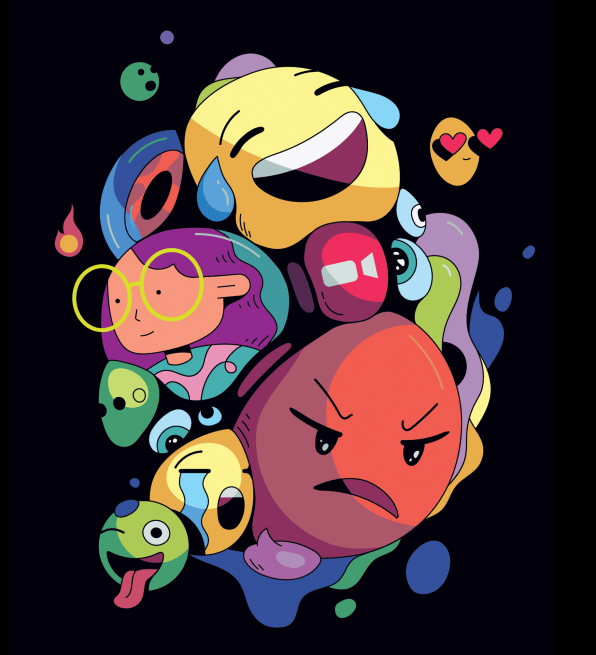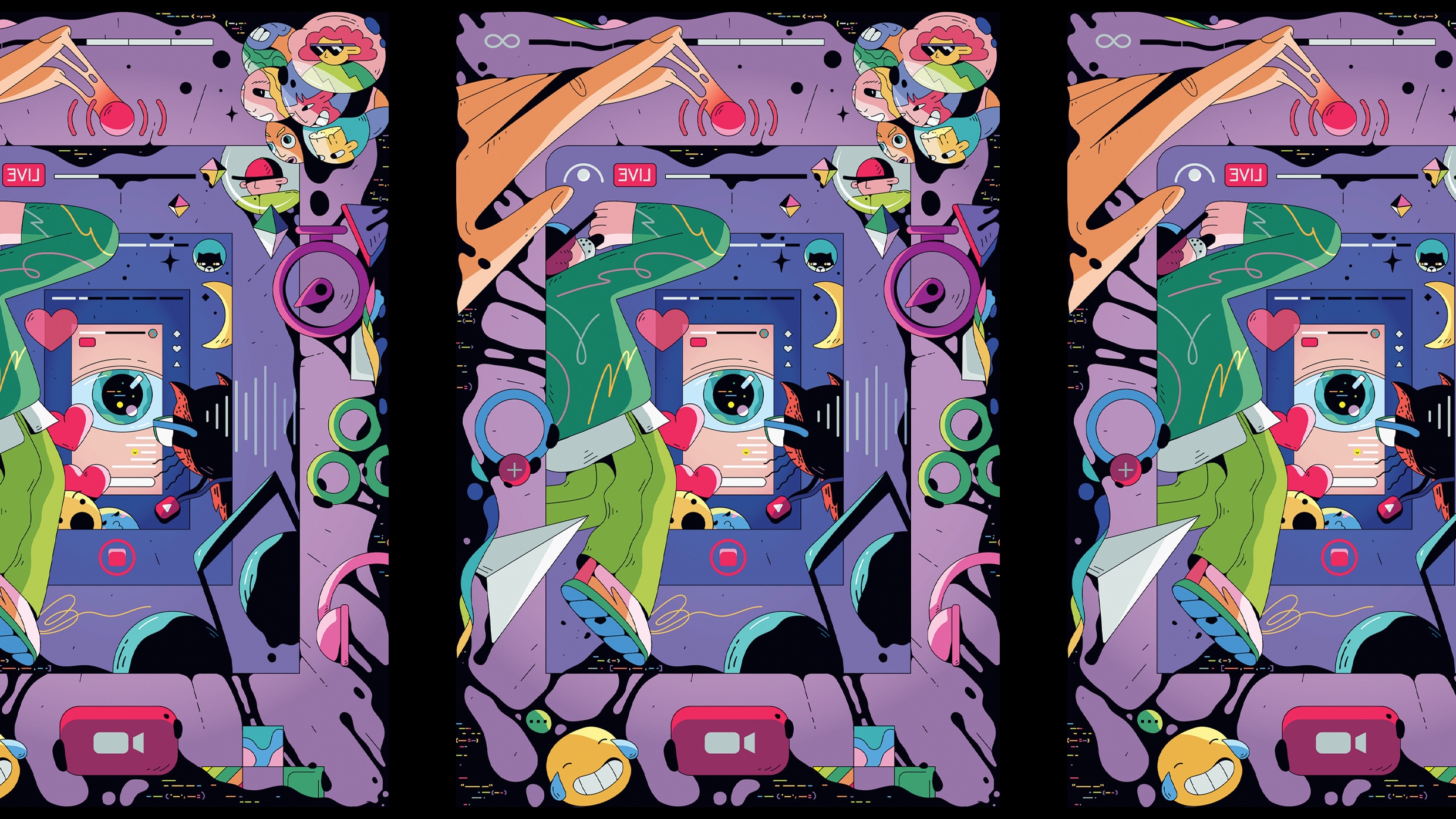How TikTok is opening the door for social innovation
Most of the time, 21-year-old photographer and influencer Tati Bruening uses Instagram to post photos of herself and behind-the-scenes looks at her shoots for her 320,000 followers. But in July, she took to Instagram to clap back at it. Like TikTok, it had started pushing full-screen videos from people she wasn’t following into her feed, submerging the social aspect that had drawn her to the app in the first place. She channeled her ire into a cry that rocketed around the Instagram community when she posted it to her feed:
“Make Instagram Instagram again. (stop trying to be tiktok i just want to see cute photos of my friends.) sincerely, everyone”
“Everyone,” it turned out, included Instagram superusers Kylie Jenner and Kim Kardashian, both of whom shared Bruening’s plea with their followers—360 million and 326 million people, respectively. That turned the app’s seeming identity crisis into a global news story.
There was a time when it felt like Instagram might be content to let people see cute photos of their friends forever. Like its corporate sibling Facebook, it’s built on the power of “the social graph”—the connections that members establish with each other that make the network exponentially more valuable as more users join and share stuff with people they know. Meta, the app’s parent company, has leveraged its control of these vast networks of connected people—almost 3 billion on Facebook, 2 billion-plus on Instagram—to build an online advertising business second only to Google’s.
But in TikTok, Meta faces a new, uncommonly threatening rival. In September 2021, TikTok’s owner, China’s ByteDance, announced that the app had reached 1 billion monthly global users. While ByteDance hasn’t revealed any official numbers since, it’s clear that TikTok is still surging.
Meta acknowledges the threat. Last February, when the company disclosed that Facebook’s active user base had declined for the first time, CEO Mark Zuckerberg pointed to TikTok’s growth. He also talked up Reels, Meta’s remarkably TikTok-like short-video feature, as a critical part of Facebook and Instagram’s future.
TikTok’s rise, and Meta’s reaction to it, raises questions that would have once seemed improbable. What if Facebook’s and Instagram’s massive social graphs aren’t an overwhelming advantage after all? Can these apps evolve in a more TikTok-like direction without losing the appeal that made them huge in the first place? And what happens to social networking when the company that’s synonymous with it publicly wrestles with the whole proposition? The answers could reshape what we see online—in Meta’s apps and beyond.
On the surface, TikTok is not a radical departure from Facebook, Instagram, and other familiar social apps. It offers yet another way to kill time by scrolling through bite-size chunks of user-generated content. But there’s a fundamental difference. TikTok’s default feed, called “For You,” isn’t determined by what the people you follow are posting. That’s because simply funneling such material into a feed doesn’t guarantee a satisfying experience: Chances are that your friends post plenty of items that you have no particular interest in seeing, maybe because they relate to interests you don’t happen to share.
Instead, the For You algorithm is a feedback loop that relentlessly serves up videos you might like based on what you’ve watched before, regardless of who created them. These purely algorithmic recommendations are a highly effective delivery system for the little hits of dopamine that keep users glued to their screens. When an app removes social connections from the equation, it helps “ensure that if you’re going to get served a piece of content, there’s a high chance that you’re going to engage with it,” says Michael Mignano, a partner at venture capital firm Lightspeed. He is among those sensing an epoch-shifting moment: In July, he published a Medium post titled “The End of Social Media and the Rise of Recommendation Media.”

The proof of this approach’s potency is in TikTok’s breakout popularity. According to the Pew Research Center, 67% of U.S. teenagers now use the app, versus 62% who use Instagram and just 32% who use Facebook. Back in 2014-2015, before TikTok existed, Pew says that 71% of teens used Facebook.
The problem for Meta goes beyond those sobering statistics. The solitary consumption of TikTok’s For You feed is beating the human contact of Facebook and Instagram. It’s a worrisome sign that the social graph’s best days could be behind it, as the next generation bonds with content picked by computer science rather than friends. “Maybe I was spending 40 minutes scrolling through my newsfeed, catching up with people I care about or even messaging my friends,” says Mark Shmulik, a research analyst at Bernstein. “Maybe that goes down to 20 minutes, and now I spend 40 minutes being entertained.”
This trend could help TikTok sap online advertising dollars from Meta: Though research firm eMarketer estimates that TikTok sold $3.88 billion in ads in 2021, compared to $115 billion for Meta, it forecasts that it will reach $23.6 billion in ad revenue by 2024. Meta posted its first-ever decline in revenue in the second quarter of 2022, followed by another decline in the third.
Meta has always confronted new challengers by cheerfully co-opting their ideas—a technique that has often paid off, as when Instagram successfully cloned Snapchat’s “Stories” feature. In recent months, it’s dramatically ratcheted up the profile of its Reels videos on Instagram and Facebook. But just as crucially, it’s embraced the concept of the “discovery engine”—a feed that isn’t wholly shaped by the accounts that users have chosen to follow. That gives both of its social platforms permission to incorporate purely algorithmic recommendations. These pieces of what Meta calls “unconnected” content already account for about 15% of the total on Facebook, and a bit higher than that on Instagram. Zuckerberg has said he expects those figures to double by the end of 2023.
Community Chronicles: Long before Facebook signed up its billionth member in 2012, social networks were taking off—or tanking.
But the TikTok-ization of Meta’s properties is risky. The company ended up rolling back the video-centric test version of Instagram that Kardashian, Jenner, and other members rejected, which Instagram director of product management Tessa Lyons defends as a productive experiment: “It served its purpose, and we proved some hypotheses and disproved others, and moved on.” She acknowledges that “we certainly have a lot of work to do to improve recommendation quality,” but stresses that the company is as serious as ever about adding more such items to the mix.
Lyons contends that the company is “making really fast progress” toward algorithms whose recommended items will be welcomed by users. If it achieves that goal with TikTok-like regularity, angst over their arrival in Facebook and Instagram feeds may dissipate. As she puts it, “No one complains about seeing something that they love.”
Meta could yet fend off TikTok, but it might lose something along the way. Through all of its innumerable controversies, the company has clung to its mission of “[giving] people the power to build community and bring the world closer together.” Even its gigantic bet on the metaverse—which prompted its corporate rebranding to Meta—presumes humans will want to interact with each other in 3D virtual worlds. But winning the algorithmic war to keep them bingeing on short-form video has little to do with building community.
Meta’s Lyons says that the company is hardly finished with adding social elements to its apps, pointing to an experimental Instagram status-update feature called Notes as one example. Still, if the biggest apps are “headed in the direction of recommendation media and away from social media, I think it’s safe to assume there’s a chance the next great social network is being built right now,” says Lightspeed’s Mignano. “It has a window of opportunity to find some success.”
The French app BeReal, which prompts you to share photos with friends, but only once a day, has captured the imagination of the Gen Z set and hit the top of app store download charts in early 2022. Then there’s Project Liberty, billionaire entrepreneur Frank McCourt’s $100 million initiative to decentralize social networking so users can have a single online identity that spans multiple networks and isn’t locked up by any one company. The first platform to pledge support: MeWe, a Facebook alternative that’s been around for a decade and has 20 million registered users. “When we talk about them being able to own and control their social graphs, which is where we’re moving, they’re really excited about it,” says MeWe CEO Jeffrey Edell. But that’s a direction that Meta—whose unique access to trillions of data points on billions of users gives it much of its power—is unlikely to go.
Wherever Meta lands as it shakes up the formula behind its feeds, its long-term domination of the social landscape has hampered innovation. Indeed, it’s discouraged upstarts from pursuing ideas that might run up against its hegemony. If Facebook and Instagram’s TikTok envy leaves those apps feeling at least slightly less social, startups might be less intimidated by the prospect of competing on their traditional turf. Instead of marking the end of the social networking age, it could even ignite something more unexpected and intriguing: a new beginning.
(64)



